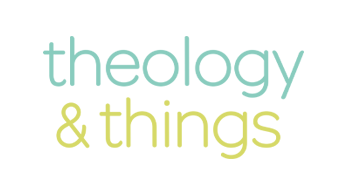The question of Mary’s place in Jesus’ genealogies is a complicated one, first because we have two separate genealogies—one in Matthew and one in Luke. Each of them is speaking to a specific audience. Matthew uses his genealogy to convince a Jewish audience that Jesus is the Messiah (which is why he emphasizes “son of Abraham, son of David”). Luke, though, is writing to a Gentile audience, and by tracing his genealogy back to Adam he emphasizes that Jesus is the savior of all humanity, Jews and Gentiles alike.
Now, what about Mary? One point to remember is that in the ancient world, genealogies served a different purpose than in our world today. When modern people trace their genealogy, the goal is to try and fill in each and every blood-related ancestor as far back as possible. In the ancient world, however, the main purpose of genealogies was quite different. The primary purposes were to:
- Show familial identity and duty
- Demonstrate credentials for power and property
- Structure history
- Indicate one’s character
For virtually all of these purposes, it was the male descendant line that was used. This is because most of the ancient world was based upon a “patrilineal” structure where the male bloodline determined family heritage and property rights. That being said, the genealogies of Matthew and Luke have unusual elements that point to Mary as a crucial person in Jesus’ lineage.
First, Matthew chooses to mention Mary, which was unusual in an ancient genealogy (“Joseph the husband of Mary of whom Jesus is born”). Matthew also arranges his genealogy into three sets of 14 people. Most scholars believe that he does this because the numerical value of the name “David” in Hebrew can be calculated as 14 (D = 4; V = 6; D = 4). Thus, Matthew is creatively highlighting the fact that Jesus is the “Son of David” which signals “Messiah.” However, in the last set of 14, there are only 13 men mentioned. The only way to arrive at 14 is to count Mary as the 14th member of the series! The fact that Matthew already includes four other women prior to Mary prepares the reader to accept that Mary is to be counted within the genealogy.
As for Luke, his gospel uses an interesting phrase when he comes to Joseph. He says: “Jesus was about thirty years old when he began his work. He was the son (as was thought) of Joseph . . . .” In other words, Luke signals to the reader that Joseph wasn’t, technically, Jesus’ father.
In light of all this, and given that the two genealogies use different names, some scholars have concluded that, despite ancient patrilineal expectations, one of these genealogies may be Mary’s lineage. For example, Martin Luther proposed that Matthew gives Joseph’s lineage while Luke gives Mary’s lineage. Here, some have gone on to speculate that perhaps Mary was the brotherless heir of her father Eli, whose estate, legally speaking, would have gone to Mary’s husband, Joseph. Others have concluded the opposite: that Matthew gives Mary’s ancestry and Luke gives Joseph’s.
In the end, we don’t have enough data to know exactly which theory is correct. But what we do know is that Jesus and the New Testament documents give a place of dignity and prominence to women – including Mary – that was unusual in the ancient world.

